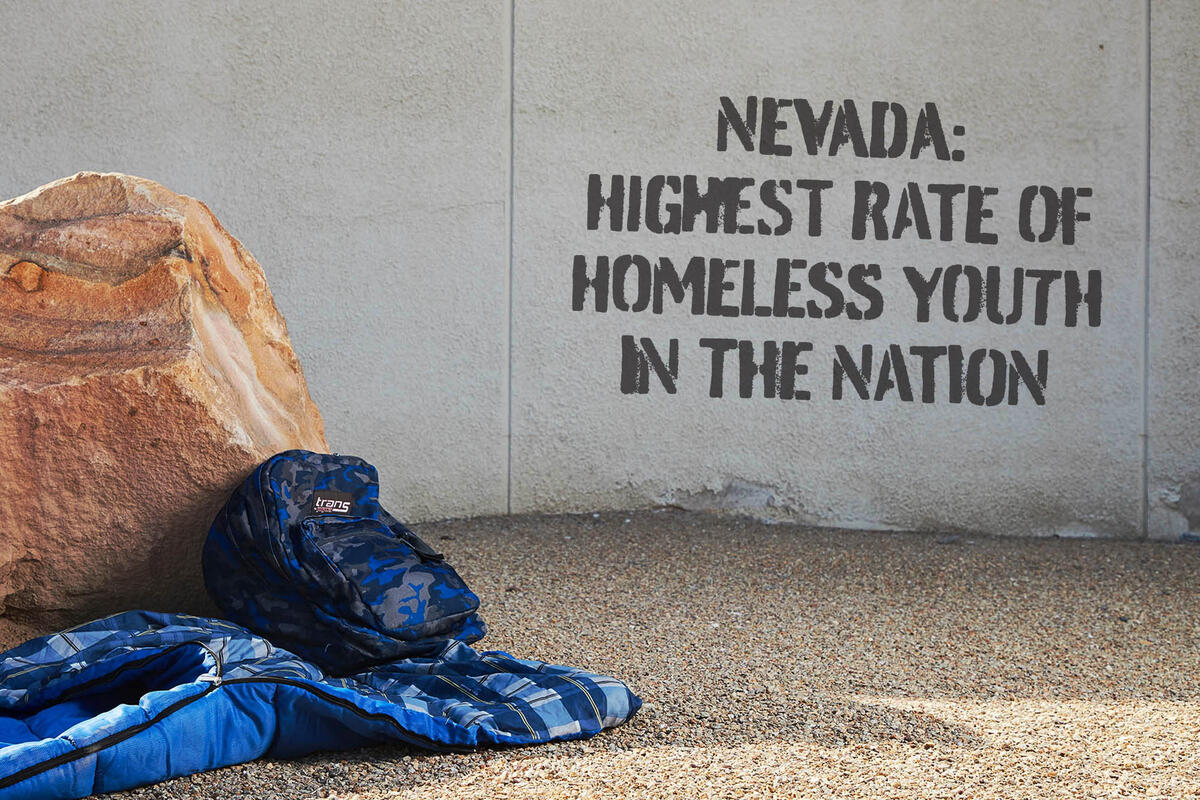The Las Vegas Valley has the second highest rate of “unaccompanied, unsheltered homeless youth” among major U.S. cities, and Nevada continues to have the highest rate of unsheltered homeless youth in the nation, according to researchers in the UNLV College of Urban Affairs.
While the problem is acute, the ways to counteract the issue are becoming clearer.
UNLV’s researchers say the numbers, detailed in the 2017 Annual Homeless Assessment Report by the Department of Housing and Urban Development and presented at the 2018 Southern Nevada Youth Homelessness Summit Nov. 2, are part of a pattern of elevated rates of unaccompanied homeless individuals under 25 years old across the west.
Those rates have social and economic consequences for Nevada and its homeless youth, particularly since most are over 18 and are eligible to become part of the workforce, said Patricia Cook-Craig, associate professor in the School of Public Policy and Leadership.
Cook-Craig presented findings from three Research in Brief papers that could diminish the problem and detailed the impact those solutions would have on the estimated 2,100 homeless youths in Nevada.
“It’s not just that we want more services or more funding,” she said. “We want to get to the point where we’re actually preventing the problem of youth homelessness from ever occurring.”
The new Southern Nevada Plan to End Youth Homelessness, a roadmap to tackle the issue developed by a community-wide network called “The Movement,” is available on the Nevada Partnership for Homeless Youth’s #BetheMovement website.
“It is important to understand the extent of the problem,” said Cook-Craig. “It’s important to use data moving forward to understand when we are innovating that the types of solutions we’re putting on the ground are actually making the change we need.”
The interdisciplinary research team included faculty with expertise in criminal justice, social work, and public policy. They collaborated with students and community members to tackle three main questions brought to them by the Nevada Partnership for Homeless Youth. First, what is the economic cost of homelessness among youth in the area? Second, how do state and local laws affect that population? And finally, How does Nevada’s approach to the issue resemble or differ from that of similar states?
Critical Data
- Clark County has the second highest rate of unaccompanied, unsheltered youth in the nation, with only the San Jose/Santa Clara, California, region faring worse.
- Workforce development issues and the shortage of housing and shelter beds were prominent reasons homeless youths faced challenges in bettering their futures.
- Southern Nevada’s homeless youth between the ages of 15 and 18 earned about $3,600 to $4,800 less annually than the average local youth. For homeless youth between the ages of 19 and 24, that range climbs to between $13,400 and $14,800.
- Without the economic contributions of homeless youth and the impact those wages make on the local economy in the form of taxes, spending, etc., the researchers estimate Nevada has suffered an economic loss ranging from $23.5 million to $35.8 million. “These cost estimates are based on the number of youth year to year so if numbers of homeless youth go down, the loss to Southern Nevada also goes down,” Cook-Craig said. “The picture is this: There is an incredible cost for our youth, for our community because we are just not preparing and we are not responding to the needs homeless youth have.”
Recommendations
The Research in Brief papers developed by UNLV researchers call for Nevada policymakers to address the issue through five new initiatives.
The researchers suggest better tracking of homeless youth once they enter the help pipeline; more resources and improved communication between state agencies; communication between the state and its regional peers dealing with youth homelessness; programs to improve access to jobs; and campaigns to increase awareness among policymakers of laws that affect homeless youth.
Cook-Craig pointed out that policies such as curfew regulations for all youth might be well-intentioned but can harm unsheltered homeless youth, who are at risk of legal repercussions for simply being in the wrong place at the wrong time.
“There are a lot of policies out there that homeless youth intersect with, but they’re not written for homeless youth. They’re not about or for homeless youth, but it just so happens they may impact positively or negatively a young adult who is homeless,” Cook-Craig said.
About the Researchers
The annual summit was the result of an ongoing partnership between the College of Urban Affairs, Nevada Partnership for Homeless Youth, Las Vegas Sands Corp., and the Las Vegas Review-Journal.
The team answered the questions in three separate Research in Brief papers:
- One of the papers examined how laws regarding truancy, health care, the juvenile justice system, education, and other areas affect homeless youth. The authors are faculty members Kathleen Bergquist (UNLV social work), Patricia Cook-Craig (School of Public Policy and Leadership), William Sousa (department of criminal justice); Nevada Partnership for Homeless Youth Executive Director Arash Ghafoori, Hannah Nelson, a UNLV social work graduate student, and Melissa Jacobowitz, a graduate of the public administration program from the School of Public Policy and Leadership.
- The second paper compares demographics, housing availability, wage information, and youth services across the major U.S. cities with the highest and lowest rates of youth homelessness. The authors are: Cook-Craig, Carlton Craig (School of Social Work), Ghafoori and Jacobowitz, and local high school student volunteer Katie Lim.
- The final paper looks at the income gap between Southern Nevada’s homeless youth and other non-homeless youth. The paper examines the losses to the state in terms of tax revenue and jobs when homeless youth face employment and financial disadvantages. The faculty authors are Jaewon Lim (School of Public Policy and Leadership), Cook-Craig; Ghafoori and Jacobowitz, and Saba Manesh, a UNLV engineering student.



